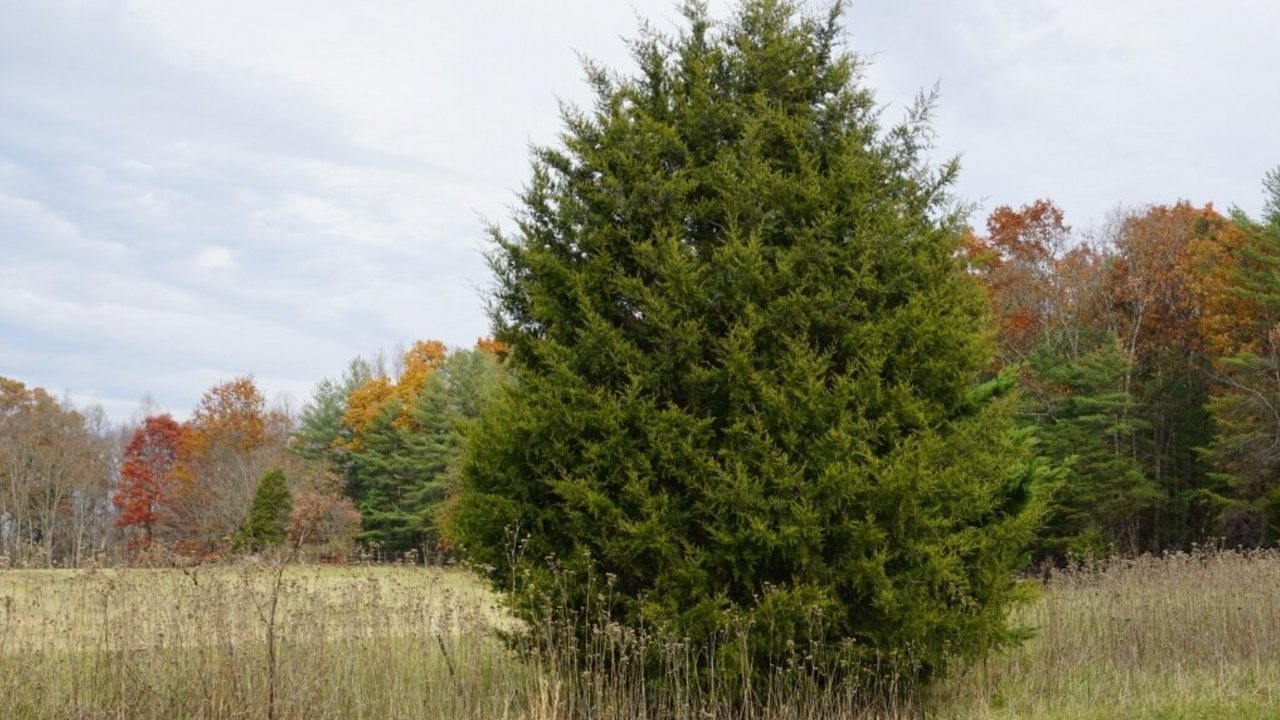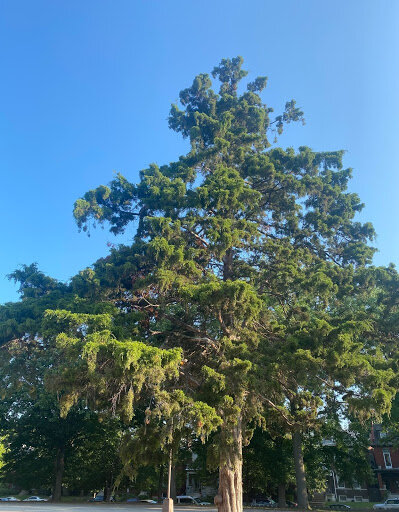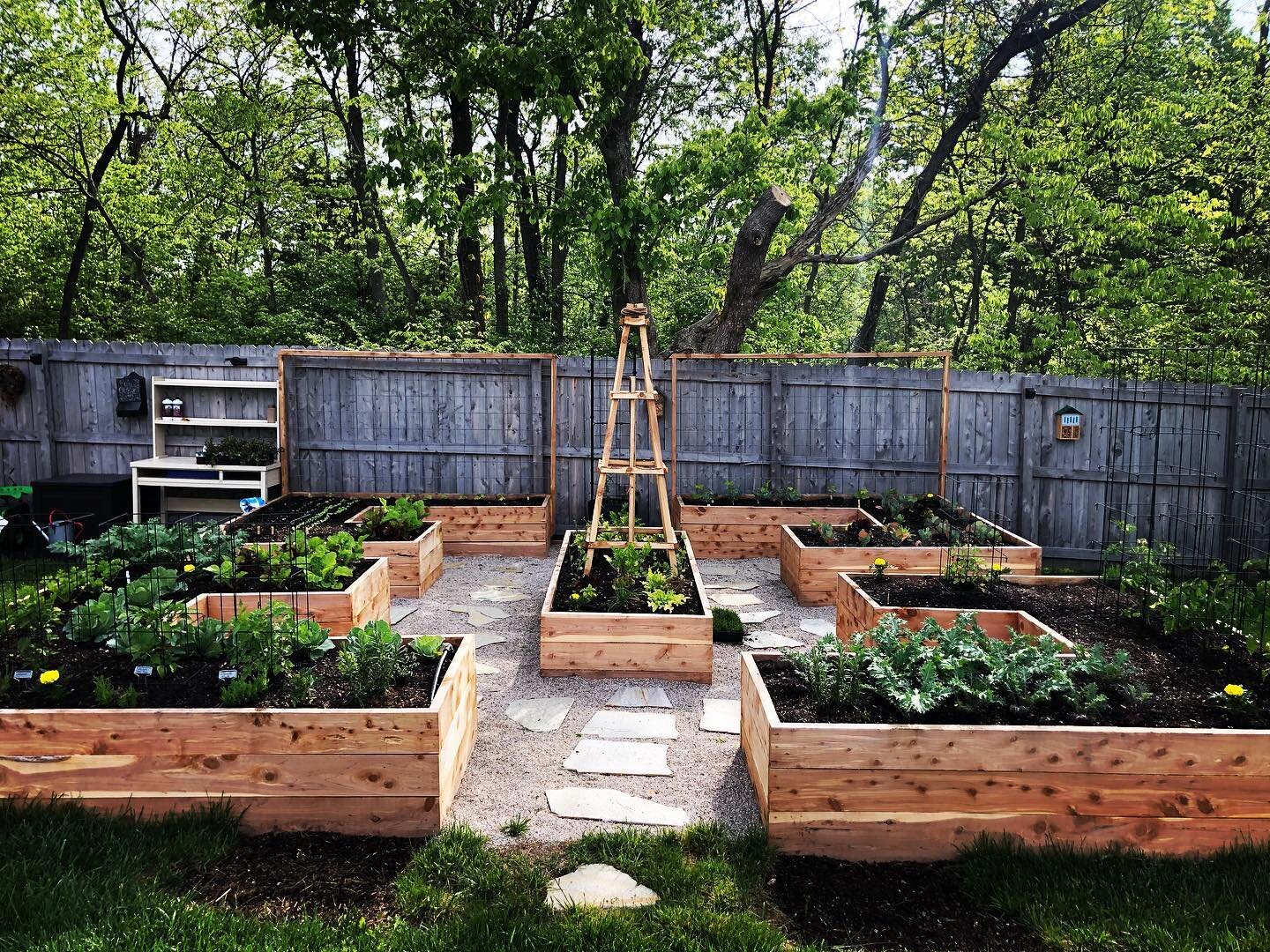
Story by Ryan Albritton, Foodscape Manager, Custom Foodscaping, St. Louis, MO
Standing in a cedar grove, twenty years in the making. The scent of Juniper in the air as birds chirp cautiously, welcoming us human strangers from somewhere in the upper branches. The grove feels like a room with tunnels leading in and out. These trees were planted, maybe, a little too close to yield dimensional lumber though a few might make good posts in a second life. For now they make exquisite living pillars for this wooded sanctuary. The lower branches have all fallen or perhaps still hang lifeless from the leader that moved on and up from their vantage many years ago. An unfamiliar eye might even mistake the grove as dead or dying, having seemingly so little green left, but the cedar knows the meaning of grow where you are planted. These are growing up out of shallow red clay in the middle of an oak-hickory forest on the upper Ozark plateau, and they don’t seem to mind.
Grow where you are planted, says the cedar, jutting out from a rocky cliff outpost above the highway. There is no soil here, but my roots find purchase anyway, and water too. I’ve been growing out of this rock since before that canyon was blasted out ahead of the advancing heartbeat of progress. If I was just a few feet over I would’ve been part of the cut but I made it for now, until progress demands more from me. Maybe someday you’ll have had enough.
We hiked through the woods for a while before finding the grove. We had put our trust in our friend who guided us, but a hint of doubt said that we were zig-zagging our way to being lost in the tick bush. This stand of wood was relatively clear of invasives, having been managed for many years. Sassafras and juvenile hickories grew up from the leaf duff on the ground. The understory was healthy. This was not managed timber land. The oaks making up the canopy grew close together and straight and narrow but we weren’t looking for oaks. Unlike most forests in Missouri, this one was remarkably clear of cedar trees but somewhere up ahead, we were told, there was a planted timber grove of cedar, possibly coming into harvest age now. This expedition was, after all, meant to assess the possibility of harvesting and then replanting a timber stand of cedar.

Image credit: Ryan Albritton
Grow where you are planted, says the cedar, cozied up against an old oak in the Ozarks. I’ve thrived under colonial rule, no longer subject to the indigenous fire management traditions that would have kept us cedars from taking over the eastern forests and plains. We had our place back then, and our sacred uses, but now we grow carelessly everywhere and are discarded as weeds by most. The stories the old trees tell speak of a reciprocal and respectful relationship in the forest. There was balance then, and purpose. Maybe someday you’ll find yours and thus ours will be restored.
Eastern Red Cedar isn’t really a cedar at all, but a juniper. Juniperus virginiana, if you want to be formal about it. The common misnomer can be attributed to early colonial settlers mistaking this redwood tree species for the cedars of the old world. The French even named the settlement of Baton Rouge after the “red sticks” that marked historical tribe boundaries nearby. Cedar resins that make the heartwood red are rot-resistant and also fairly flammable.
What’s the rest of the story? What does it mean to have a relationship with a tree? How can we show respect for something that we ultimately ask to sacrifice itself for our needs?
Grow where you are planted, says the cedar, in grandma’s front yard. I was born on a Christmas tree farm and spent my fourth winter adorned with gifts before getting planted in this prime sunny spot in the suburbs. I got water and fertilizer, and many laughs from children running circles around me. I grew and grew, and now I don’t look like most of my relatives who are starved for light or for soil. I’m tall and round at my base and pointy at my top. My branches are home to many birds but I’m lonely here. I want to start a grove here but all that grows around me is grass. Maybe someday you’ll stop mowing around me and just let life be.
As we stood there in the grove, humbled by the trees and their air that we breathed, words of tribute and gratitude began spontaneously erupting from each of us. Maybe that’s all it takes, just to stand in a tree’s presence and listen, look, and see. Feel the bark and branches, smell the gin berries and the tree will tell you. We didn’t ask permission to harvest, because it wasn’t time. So we said our thanks and goodbyes, feeling full from a few minutes in the cedar realm, took our leave through the tunnels and back into the realm of Monday.
Grow where you are planted, says the cedar, twisted and gnarled and rooted into pebbles in a cedar-framed planting box. I grew freely for fifty years, but for the last few I’ve been kept in this shallow place. They take care of me and feed me the best meals, but my roots are kept short, and my growth managed. I look like a miniature version of my true self, like a pet with no purpose but to please. Still I grow. Still I breathe. Maybe someday you’ll forget about me outside and my roots will find the earth again.

Custom Foodscaping - cedar compost bin
The question still looms. How do we foodscapers make our work sustainable and regenerative, given that we still rely on so many industrial supply lines? How do we honor the harvest? At Custom Foodscaping, we’d like to have a more direct relationship with our cedar, to know some of the trees before they have become a commodity for the growth of our business. We hope to plant a regenerative woodlot for the future, even if it is not us who ultimately ask permission to harvest.
Grow where you are planted, says the cedar, just bursting from seed and soil. I don’t have much to say right now, but I’ll be right here for a while, soaking up the sun and trying my best to cool the planet. Maybe someday when I’m an old red stick, balance will have been restored to the forest, and I’ll be telling stories of this time of uncertainty and all of you who helped bring us through.

Custom Foodscaping - cedar raised beds

